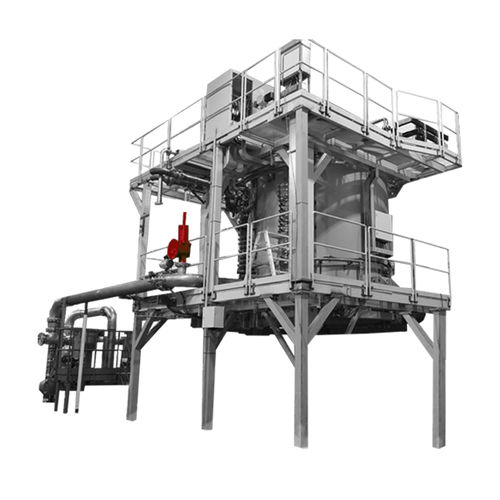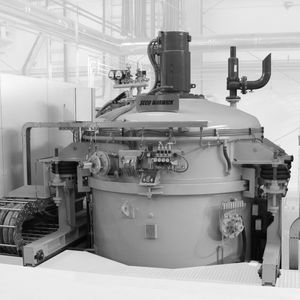
- Company
- Products
- Catalogs
- News & Trends
- Exhibitions
Graphitization furnace hydrogengraphiteindustrial
Add to favorites
Compare this product
Characteristics
- Function
- graphitization
- Atmosphere
- hydrogen
- Other characteristics
- graphite, industrial
Description
Purification furnaces using gases such as hydrogen chloride (HCl) are used to purify graphite materials.
The graphite purification process involves removing dirt and impurities from the graphite material in order to increase its purity and excellent properties.
Various techniques are used to purify graphite, including thermal treatment and chemical processes.
The graphite purification process using process gases such as fluorine and chlorine takes place in a specially designed furnace which enables the controlled removal of impurities from the graphite material. This advanced process uses the reactive properties of fluorine and chlorine, which facilitates the removal of contaminants, such as metal compounds and other impurities, through chemical reactions. During purification, graphite is subjected to high temperatures in the presence of these gases, which causes them to interact with impurities, transforming them into easily evaporated or volatile compounds. This process is crucial for the production of high-quality graphite materials which are used in advanced technologies, such as the production of fuel cells, the electronics industry, or refractory material production. Thanks to the furnace’s use of fluorine and chlorine, it is possible to obtain pure graphite of very high quality standards, which is extremely important in applications where the purity of the material is crucial.
Catalogs
No catalogs are available for this product.
See all of SECO/WARWICK S.A.‘s catalogsRelated Searches
- SECO/WARWICK oven
- SECO/WARWICK chamber oven
- SECO/WARWICK electric oven
- SECO/WARWICK heat treatment oven
- SECO/WARWICK laboratory oven
- SECO/WARWICK combustion oven
- SECO/WARWICK gas oven
- SECO/WARWICK tunnel oven
- Baking oven
- SECO/WARWICK industrial oven
- SECO/WARWICK controlled atmosphere oven
- SECO/WARWICK high-temperature oven
- SECO/WARWICK automatic oven
- SECO/WARWICK vacuum oven
- SECO/WARWICK annealing oven
- SECO/WARWICK continuous oven
- Forced convection furnace
- SECO/WARWICK programmable oven
- Air circulating furnace
- SECO/WARWICK melting oven
*Prices are pre-tax. They exclude delivery charges and customs duties and do not include additional charges for installation or activation options. Prices are indicative only and may vary by country, with changes to the cost of raw materials and exchange rates.



















